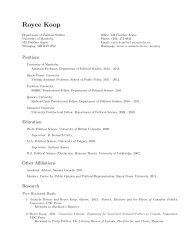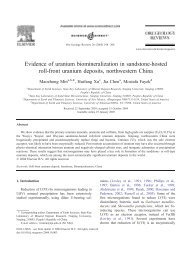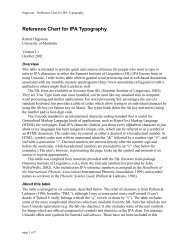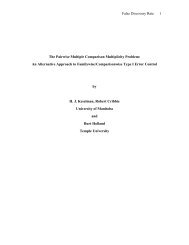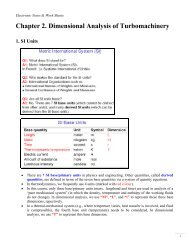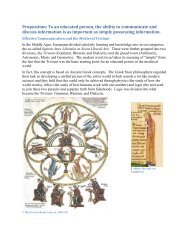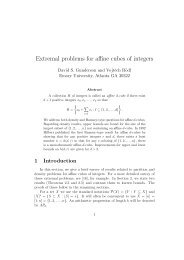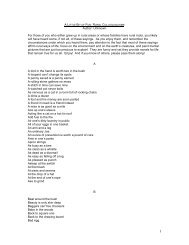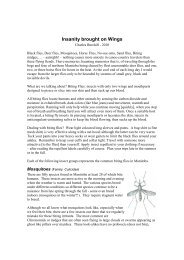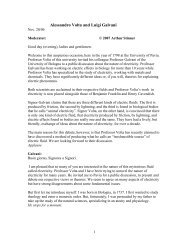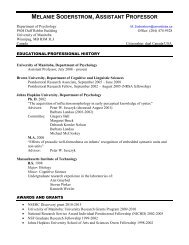Newsletter - University of Manitoba
Newsletter - University of Manitoba
Newsletter - University of Manitoba
Create successful ePaper yourself
Turn your PDF publications into a flip-book with our unique Google optimized e-Paper software.
Later that afternoon we drove to West Sandy Creek on highway 160, west <strong>of</strong> Attica, which<br />
proved to be a productive spot. Although in an area surrounded by agricultural fields, there were<br />
plenty <strong>of</strong> excellent habitats present, with the sandy patches among grass and shrubs commanding<br />
our attention. Here we took about 20 beautifully patterned (red with broad white markings) C. f.<br />
formosa, and as many C. s. scutellaris. Other beetles present under debris were four species<br />
carabids, including the unusually shaped Galerita jason (21-mm long, thin, and with purple and<br />
orange body parts feebly connected) and Pasimachus sp (32 mm, flattened, and with large<br />
mandibles), several black Dyscinetus scarabs, and Eleodes darkling beetles (Tenebrionidae),<br />
which as is their custom, stood high on extended legs and raised their rear end in readiness to<br />
discharge a protective secretion. Bob also took the opportunity to pick up (with long forceps)<br />
two large and robust Western Black Widow Spiders (Lactrodectus hesperus), as well as an<br />
attractive bee and several Black Corsair reduviid bugs (Melanolestes picipes). An outbreak <strong>of</strong><br />
this species in 1899 was responsible for the “kissing bug scare” in NE North America. This time<br />
Bob spotted two species <strong>of</strong> snakes – a 120-cm black phase Eastern Coachwhip (Masticophis<br />
flagellum flagellum) and a young attractively marked, 26-cm, unknown species. Several lizards<br />
dashed away too quickly to notice identifying features. It is gratifying to observe so many<br />
species (invertebrates, frogs, reptiles, birds and small mammals) packed into surviving patches <strong>of</strong><br />
a rich prairie community.<br />
We returned to the motel in Medicine Lodge, satisfied that we had a successful day. After<br />
dinner, Todd decided to return to the creek site to lay out a string <strong>of</strong> pit-fall traps for insects, and<br />
from 10 to 12:00 PM, Bob checked the mercury vapour lights around town for insects. He<br />
thought it likely too early in the season for many species to be out and flying, but the evening<br />
remained exceptionally warm at 24 C, and about 150 specimens <strong>of</strong> over 28 species <strong>of</strong> beetles and<br />
other insects were saved, including the carabids Colliuris pensylvanica (red and black, and with<br />
an exceptionally long pronotum and head), Chlaenius unicolor (really stinky), Scarites<br />
subterraneus, Pasimachus sp, Harpalus sp, and Calosoma marginalis (likely from the 2007<br />
season, since not emerged yet); the scarabs Cyclocephala (possibly C. lurida, 50 specimens), a<br />
large black June Beetle Phyllophaga sp, Dyscinetus sp, Anomala binotata, the hide beetle<br />
Osmorgus scabrosa, and the dung beetles Copris fricator and Phaneus vindex (shining red and<br />
green); the fascinatingly shaped Boat-backed Darkling Beetle (Embaphion muricatum); two<br />
species <strong>of</strong> stink bugs, including the Southern Green Stink Bug (Nezara viridula), eight 16-mm<br />
black Black Corsair assassin bugs (Melanolestes picipes); and two 15-mm black water scavenger<br />
beetles (hydrophilids).<br />
Later that night, spotting a fluttering 30-mm black insect with orange wings on the pavement,<br />
which could have been the rare long-horned beetle Leptura emarginata, Bob had to make a quick<br />
decision whether to capture it with his hand (no net available), since it appeared ready to take<br />
flight any moment. He guessed wrongly, proving that sometimes a correct identification is really<br />
important! Instead <strong>of</strong> the longhorn wasp-mimic, he caught the real thing – a spider or tarantula<br />
wasp (Pepsis thisbe). The sting <strong>of</strong> pepsis wasps is reputed to be among the most painful <strong>of</strong> any<br />
insect (highest-level 4 on the Schmidt Sting Pain Index), but fortunately the sting on his index<br />
finger was not as painful as anticipated, and dissipated in a few minutes, although his digit<br />
swelled up, itched, and remained numb for a week. No wonder a stung and stashed spider can’t<br />
move even after the wasp larva hatches and begins to sip and chew on its helpless prey. After<br />
collecting thousands <strong>of</strong> wasps around North America, it is only fair he get stung once in a while.<br />
10



